Waiting list blowouts, the death of bulk billing: Inside our GP crisis
As bulk billing dies, patients pay more and more, and doctors are “embarrassed” to train as a GP ... is there a way to fix the system?
The federal government must fund more medical students places at universities to help combat the growing crisis in general practice.
State health minister Chris Picton and the dean of Adelaide University medical school Danny Liew have both urged the federal government to increase funding as fewer students choose general practice as a career option and as increasing numbers of older doctors consider leaving the profession.
“If we don’t do something to increase the number of doctors that we are training ourselves in Australia, that’s ultimately going to mean the supply of GPs and doctors in hospitals gets tighter and tighter over time,’’ Mr Picton said.
Today’s SA Weekend investigates the emergency in GP care, the financial squeeze felt by doctors amid Medicare funding freezes, falling bulk billing rates and increased waiting times for patients.
Last year, the Royal Australian College of General Practitioners said only 13.8 per cent of medical students were choosing to become GPs. In the mid-1980s, that figure was around 40 per cent.
Mr Picton said the shortage was particularly acute in regional areas.
“I want to see the caps lifted for doctors,’’ he said. “Both Adelaide and Flinders are wanting to expand their programs, particularly in terms of regional students, but they’re waiting to hear from the federal government on the green light to go ahead with that.’’
Professor Liew at Adelaide University said the federal government should lift its cap on medical student numbers as long as “we ensure they end up in general practice and other areas of need, and the quality of training is preserved’’.
Adelaide University takes in around 160 students a year, but Prof Liew said the “number of applications far exceed available places’’. According to SATAC, 2554 undergraduate students nominated medicine as their first preference for 2023.
Flinders offers a Bachelor of Clinical Sciences/Doctor of Medicine undergraduate degree and also has a postgraduate medical program. This year Flinders had 762 students nominate the undergraduate degree as a first preference and accepted 42 students. It had 830 applications for its postgraduate course and accepted 108.
Federal Health minister Mark Butler said while the government had a “targeted’’ program to provide more places for regional students “beyond that we have no plans right now to expand the size of medical schools’’.
Mr Picton said it had been disappointing the issue of more funded medical places had not been addressed in February’s Strengthening Medicare report released by the federal government, but hoped there would be better news for GPs in next month’s Budget.
“Clearly the Budget is going to be pivotal in this as well,’’ he said. “If we don’t see an overall increase in funding going to general practice, and also an increase in the workforce coming in, that’s going to have significant impacts.’’
Waiting list blowouts, the death of bulk billing: Inside our GP crisis
Waiting times to see a GP have blown out by more than 60 per cent since 2019, while costs for patients soar and bulk billing clinics become harder to find.
The Australian Healthcare Index Report has found the gap of 2.5 days between booking and appointment recorded in 2019, had ballooned to 4.05 days last year. The data was compiled by online booking company Healthengine and the Australian Patients Association from a survey of 11,000 people nationwide.
Royal Australian College of GPs SA president Sian Goodson, during an in-depth interview with SA Weekend, said the blowout in waiting times was a “symptom of Australia’s health system crisis’’.
“The problem is decades of underfunding by successive governments has made it harder and more expensive to see a GP, which is causing more people to go to hospitals which are already overloaded,’’ Dr Goodson said.
“More Australians visit a GP each year than any other service in our entire health system but funding for GP patients is less than 8 per cent of total government health spending.
“And we also have a shortage of primary care workers, including GPs, pharmacists and nurses.’’
Today’s SA Weekend examines the crisis in GP care, looking at why fewer doctors are choosing general practice as a career option, the financial strain caused by a decade-long freeze in Medicare funding and the rapid decline in bulk billing.
While official government statistics claim the bulk billing rate was 84 per cent, a survey released in January by healthcare directory Cleanbill said in SA only 28 per cent of all clinics charge no fee to all patients.
The survey also found that the average gap fee paid by South Australians in greater Adelaide was $34.81. However, it also found a wide range of fees, with Salisbury averaging $12.75 in out-of-pocket expenses, while in Belair it reached $54.42.
Mr Butler told SA Weekend there was no quick fix for a Medicare system that had outlived its usefulness but there would be more detail and funding in the May budget
“It’s not one budget, it’s not one term of parliament,’’ Mr Butler said.
“You can’t put more money into the existing system because the existing system just isn’t meeting the needs of Australian patients in the 2020s.
“We have an older population with much, much more chronic disease that requires a different type of care to the sort of care that that was much more common 40 years ago.’’
Mr Butler said five urgent care centres would be open in SA before the end of the year to help take pressure off hospital emergency departments, which are also being hit by patients avoiding GP visits because they were becoming too expensive.
State Health Minister Chris Picton urged Mr Butler to take action in the budget to make GP care more affordable.
“What we need now, though, is the prime minister to listen to what Mr Butler is saying and make sure in the next budget that we see a response to that and we see an actual injection in terms of helping general practice across the board because otherwise, we’re going to see the situation just get worse and worse,’’ he said.
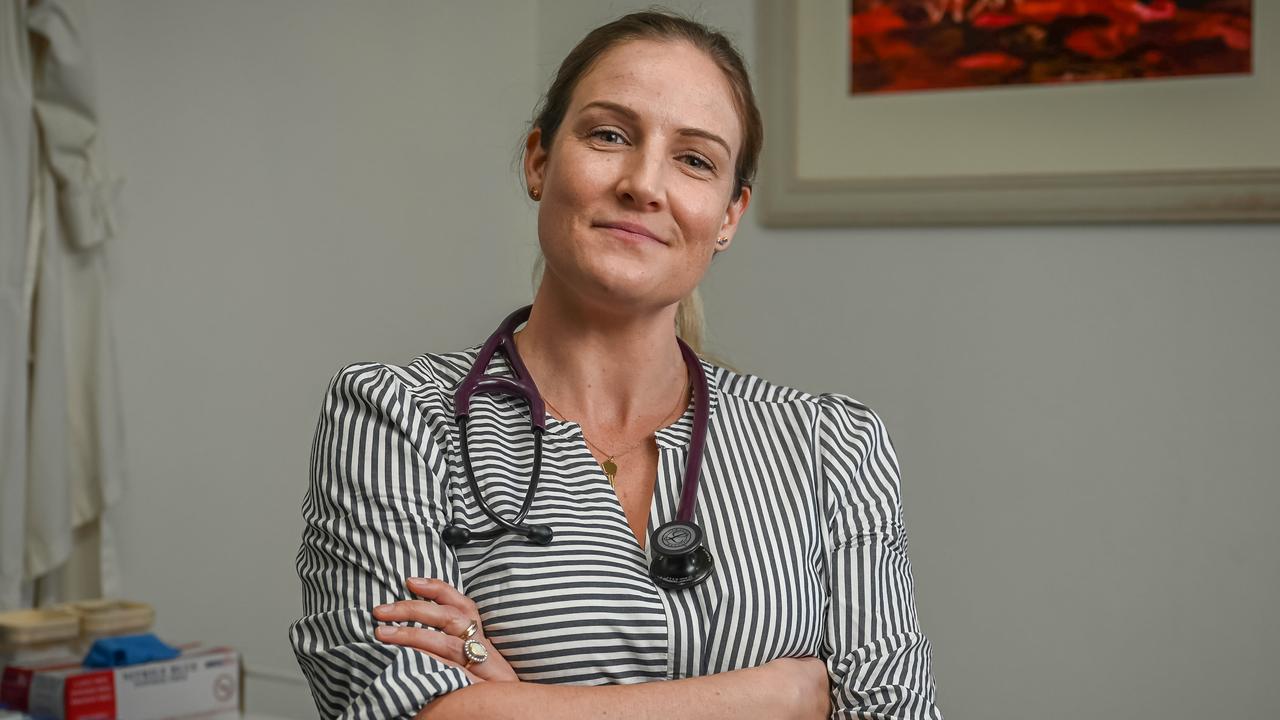
It’s a long road to become a GP and Carmel Toms has taken a few diversions along the way. Somewhere along the way, Toms became disillusioned with medicine.
Long nights, long weeks in hospital emergency departments can do that to a doctor. She decided she needed a break and took 18 months out of medicine and travelled around Australia with her partner in a caravan.
“I wasn’t sure if I was going to come back to medicine,’’ she says. “You know, I was going to be a florist or a scuba diver instructor … all these amazing things.’’
But somewhere around the outback communities of the Pilbara and the Kimberley in WA, Toms started to reconsider.
She started to think about the importance of a doctor’s role in health care and education within those communities. She talked to friends and family members who were in general practice. And something occurred to her.
“I just thought they have actually got really fulfilling professional and also personal lives,’’ she says. “That was a lot of what I lost working in the public hospital system.’’
And here we are today, Toms, dressed in a black Guns N’ Roses T-shirt and jeans is one of 80 GP registrars in the function centre at Morphettville Racecourse as they embark on a training course that will establish them as fully-fledged GPs.
The following day, Toms will start at the Seacombe Medical Centre as part of a two-year stint as a registrar that will eventually mean she will be able to call herself a GP.
But Toms and the other doctors are entering a profession that by common consent, from the federal Health Minister down, is in crisis.
Fewer medical students than ever are choosing general practice as a career. Clinics are finding it increasingly difficult to attract doctors, especially in outer suburban and rural areas.
Older doctors are bringing retirement plans forward.
The pay gap between GPs and their medical colleagues in other fields continues to widen as the Medicare rebate freeze goes into its 10th year.
All the while, patients are forced to wait longer and longer before they can get in to
see a GP.
Toms has been working as a locum in Yorke Peninsula hospitals for the past six months. She will take a large pay cut to become a GP registrar.
At the same table at Morphettville, Andrew Kay, another GP registrar who has been working in hospitals, says he will be going from earning $80 an hour to about $40 an hour.
“Definitely not in it for the money but certainly it’s a big financial decision to go from hospital to general practice, because it’s the only specialty that takes quite a big pay cut,’’ he says.

Danny Byrne has been a GP for 30 years and remembers when it was all a bit different. It was a time when a young doctor’s decision to plump for a career in general practice was nothing out of the ordinary.
“I wanted to be a GP from day one,’’ Byrne says. “It wasn’t like I did general practice because it wasn’t good enough (to do anything else). It’s just what I wanted.”
As part of his medical training, Byrne was a junior doctor at the Queen Elizabeth Hospital.
He would do the rotations – emergency, psychiatry, obstetrics, paediatrics – and found the specialists encouraging with their advice.
They knew medicine was an intertwined world. That these trainee GPs would be the ones in the future who would send them referrals and then look after patients when they were released from hospital.
Back then though, almost half of those interns would end specialising in general practice. Now, Byrne says, attitudes have changed.
“Today, if you want to be a GP, you almost feel embarrassed in the hospital,” Byrne says.
“You want to be a GP? What do you want to do that for? You’re better than that.’’
And a lot of it comes down to money.
“It’s really looked down on and you can just track the income disparities with the (decline in) popularity and the prestige, which is just really sad,” Byrne says.
Almost the starkest statistic in the debate surrounding the GP crisis is the one that shows how few medical students now want to become GPs.
Last year, the Royal Australian College of General Practitioners (RACGP) issued a white paper following a “crisis summit” it held in Canberra to talk about the future of the profession. It included the stat that only 13.8 per cent of medical students are choosing to become GPs. In the mid-1980s, that figure was about 40 per cent.
Byrne, like many others, believes the decline in students opting for the GP path can be traced to the widening gap between what a GP will earn and what a “procedural’’ specialist is paid.
A 2021 Melbourne Institute report found that between 2008 and 2018, GP earnings increased from a mean $189,574 to $209,938.
Certainly a decent pay packet, but over the same time frame, non-GP specialists jumped from $338,554 to $411,575.
Those specialists started higher and continued to widen the gap.
As with the “procedural specialists’’ it takes a lot of training to produce a GP.
First of all a medical degree needs to be completed. Then there is a year as an intern. Maybe two years as a resident. Then a doctor applies for the Australian General Practice Training program. This takes another three to four years of full-time training, plus exams. Then after all of that, you can call yourself a GP.
If you want to become a rural GP, there is another year added on.
In SA, the raw number of GPs is increasing.
According to the local chapter of the RACGP, there are 2920 GPs working in SA, although fewer are working full time. It translates to around 2093 doctors in full-time equivalent terms.
The numbers are up, but that does disguise some disturbing trends; nationally, more than 40 per cent of GPs are 55 or older.
And they are leaving the profession.
An RACGP survey last year found 25 per cent intended to retire within the next five years. In 2021, that number was 18 per cent.
And fewer than half of GPs believed they will still be practising in 10 years’ time.
The numbers of doctors working more than 40 hours a week is also on the decline.
All of which raises the prospect that many more GPs could soon be leaving the system than are entering it.
In addition, the number of foreign-trained doctors coming to Australia is falling.
More than half of all GPs in SA have been trained overseas. There is an ethical problem in all this. Australia is taking the doctors, often from poorer countries who have trained them, and using them to fill our own gaps.
But Covid has put something of a pause to all that. The number of overseas-trained doctors coming to Australia dropped from 2991 pre-Covid to 2115 in 2020-21, but is now rising again.
A report by consultants Deloitte estimates there will be a shortfall of 11,392 GPs across Australia by 2032.
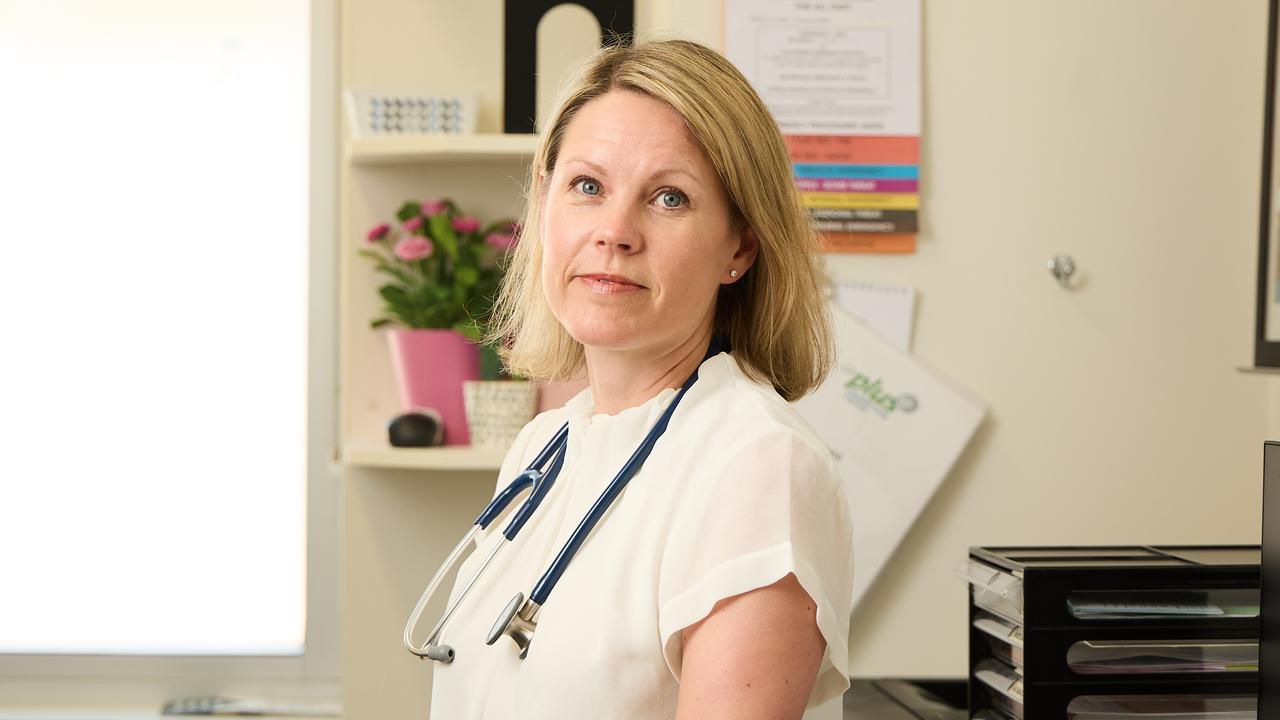
Sian Goodson is chair of the SA branch of the RACGP.
Goodson can see the argument from all sides.
English-born and trained she has been in South Australia with her husband, also a GP, and their children for 11 years. She and her husband started in a practice in Golden Grove, sold that and now work in Elizabeth.
Goodson is like many GPs. The part of the job that appeals to her most is the connection with the patients.
Being a GP is different to many other specialties where patients come in with a specific ailment that can be fixed, and there the relationship ends.
Many GPs use the phrase “cradle to grave” to describe their relationship with patients.
“I like being a GP that knows my patients, over many, many episodes of care, and have that longitudinal relationship,” Goodson says.
“I know what’s going on in their lives, I know their children, I know about what’s going on with their parents. I like that.’’
She would like to spend more time with patients but the way the system is structured works against that.
GPs receive the same Medicare rebate if they spend six minutes or 18 minutes with a patient. Which means in some clinics, a doctor could see 10 patients in an hour.
Get them in, give them a prescription, get them out. Next.
Which in an age where the population is becoming older, where people have increasingly complex health problems, where discussions on mental health are becoming a standard part of a GP’s day is not ideal.
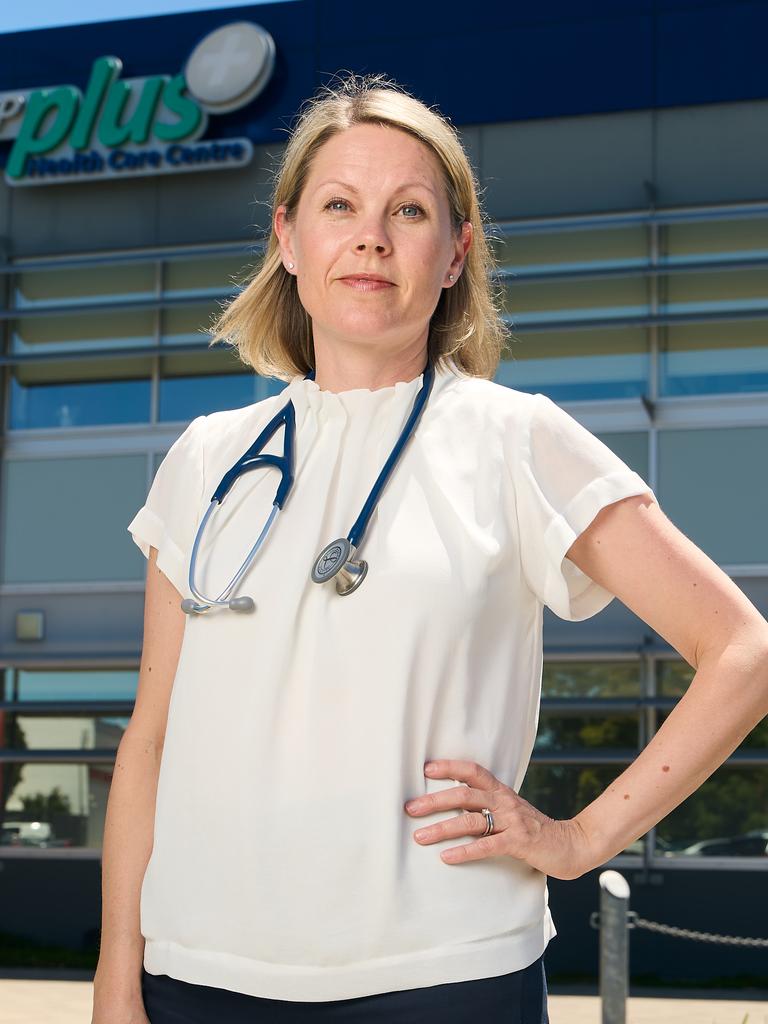
The federal government’s Strengthening Medicare report, which was released earlier this year, has a recommendation for “funding for longer consultations’’ and the need to provide a more rounded approach to primary care, including better use of other health professionals such as nurses, but there was no funding promise attached.
Then there is the Medicare rebate.
The previous Labor government placed a freeze on the rebate shortly before it lost office to Tony Abbott’s Liberals in 2013.
That freeze has never been lifted and Goodson says that alone has “basically stripped billions out of primary care”.
All of which means bulk billing rates are in decline. Increasingly, GP practices are not able to exist on the rebate from Medicare alone and are charging a “gap” payment for their service. This is a giant cultural shift in a country that has long prided itself on providing free medical care. Or if not free, funded by the Medicare levy on your income tax.
“Patients are conditioned, they expect to pay if they see a private specialist whereas they’re conditioned to think that they should be getting primary care for free,” Goodson says.
And, part of the problem may also be that good doctors may not necessarily be good business people.
“I don’t think we learn business skills very well as doctors,” Goodson says.
Government figures released in January showed the bulk billing rate had dropped from 87 per cent to 84 per cent in the first quarter of the current financial year.
But these numbers mask the real and rapid decline in the number of doctors charging patients no fee.
The Medicare rebate for a standard 20-minute consultation is $39.75.
From that number a GP or a practice must not only pay themselves a salary but also fund all the other costs involved in running their business, from electricity to insurance.
It’s a position, doctors say is increasingly unsustainable.
The last increase in the rebate in July last year was 65c for each consultation at a time when inflation is soaring economy-wide.
A survey of GP practices by online healthcare directory Cleanbill released in January, found only 43 per cent of GP clinics bulk billed all patients nationally.
Across “Greater Adelaide” it reported this number was 28 per cent.
It found the average out-of-pocket cost for patients across Adelaide was $34.81.
This ranged from $12.75 in Salisbury to $54.42 in Belair. And those numbers are only likely to increase.
They also point to another problem.
Why would doctors want to work in suburbs such as Salisbury where socio-economic conditions mean it will be very difficult to ask people to pay large fees?
There is a risk Australia is headed towards a multi-tiered health system where only the financially stable will be able to pay for health care.
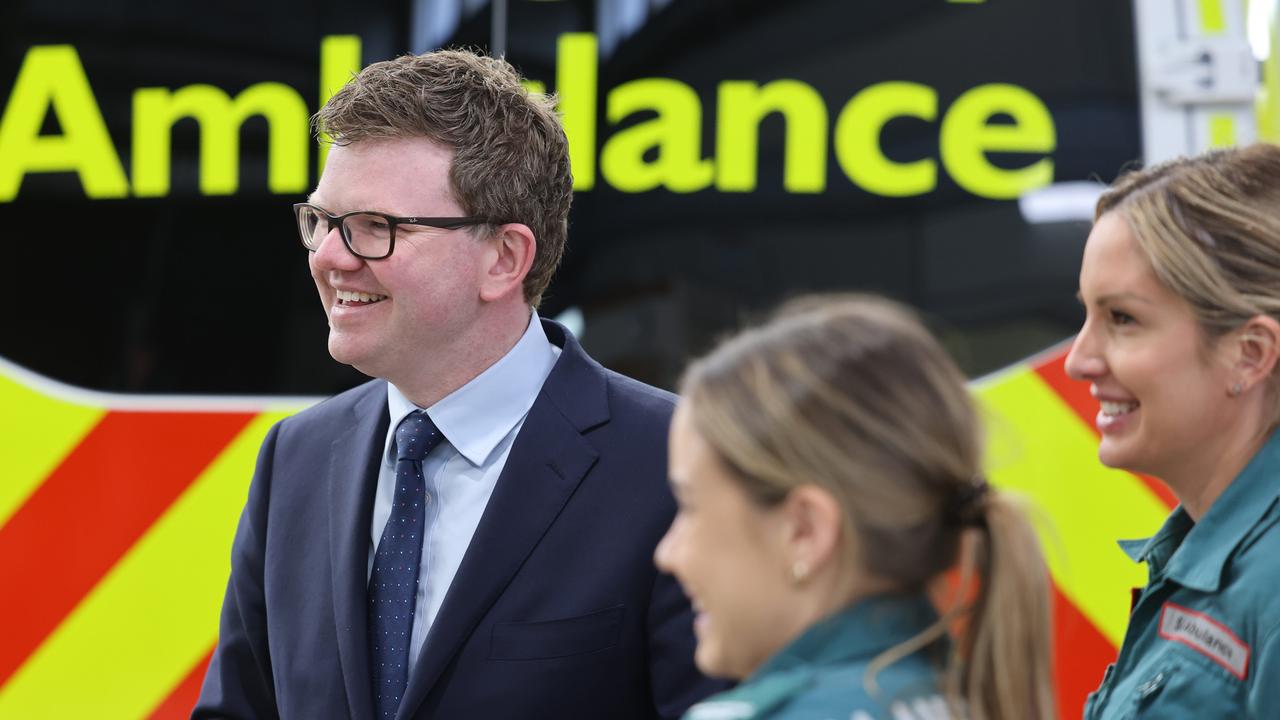
The day after the federal government’sStrengthening Medicarereport Danny Byrne sent out a note to the patients in his Chandlers Hill surgery, saying that because the “government does not intend to increase your Medicare rebates” that he had no choice but to put up fees.
“Your choice is to stay with Chandlers Hill Surgery’s quality care or move to a bulk billing clinic with rapid six-minute consultations,” the note says.
For adult private patients Byrne says the gap above the rebate will now be $50.25. For pensioners and health card holders it will be $25.25.
Byrne knows he is one of the lucky ones, even though he says his practice is $90,000 down for the first six months of the year.
His surgery is in high demand and has closed the books to new patients.
There is also the pressing problem of the flowthrough effect rising GP fees will have on the rest of the broader health system, which has a confusing and often inefficient mix of roles for both federal and state governments.
Since Labor won the state election in March 2022, its health minister Chris Picton has been battling to find answers to ongoing problems within the system, including clogged emergency departments and the very visible lines of ambulances “ramping” outside of hospitals.
At least part of Picton’s problem can be traced back to the crisis in GP care.
Anecdotally, doctors will tell stories of patients going to hospital emergency departments for reasons as trivial as having prescriptions renewed.
But Picton says the problem is deeper than just those who turn up at emergency when they should be visiting a GP. That there are an increasing number of people who won’t go to a GP because they can’t afford it.
And by not going to a GP when they should they “get sicker, and then they’ve got no option but to go to an emergency department when they are really sick”.
Which also becomes something of a vicious circle.
“Many people who are probably most vulnerable to a whole range of chronic diseases due to their socio-economic status are not going to be able to go to the doctor because they won’t be able to afford it,’’ he says.
“So something has to be done about the affordability.”
Picton also believes the federal government should lift the cap on the number of medical students allowed to be trained in the state’s universities.
“If we don’t do something to increase the number of doctors that we are training ourselves in Australia, that’s ultimately going to mean the supply of GPs and doctors in hospitals gets tighter and tighter over time,” he says.

Danny Liew is the dean of the medical school at Adelaide University, which takes in around 160 students a year. He says the “number of applications far exceed available places’’. According to SATAC, 2554 undergraduate students nominated medicine as their first preference for 2023.
Liew believes the federal government should lift its cap on medical student numbers as long as “we ensure they end up in general practice and other areas of need, and the quality of training is preserved”.
It’s a tough slog to be accepted into medical school. The cut-off ATAR score at Adelaide Uni is listed as 90, but in practice is usually significantly higher.
Applicants then sit the UCAT test, which assesses “mental abilities, attitudes and professional behaviour”.
Then there is an interview.
Flinders offers a Bachelor of Clinical Sciences/Doctor of Medicine undergraduate degree and also has a postgraduate medical program. This year Flinders had 762 students nominate the undergraduate degree as a first preference and accepted 42 students.
It had 830 applications for its postgraduate course and accepted 108.
It looks like a lot of talented students who would make good doctors never receive the chance. But once a student makes it to medical school more must also be done to promote general practice as a career option.
Tish Sivagnanan is president of the Australian Medical Students Association and believes universities need to do more to present general practice as a viable career option.
“A lot of our training as medical students actually occurs in an acute health care setting, so in hospitals, and we’re also commonly taught by non-GP specialists,’’ she says.
Sivagnanan believes this lack of regular exposure to the world of general practice means students not meeting “with potential mentors and role models who are general practitioners, is probably quite a huge deterrent because we’re just not getting that interaction”.
Finding doctors willing to work in rural and regional areas is a growing problem.
Last year, the state government advertised for doctors to work in Lameroo and Pinnaroo, offering up to $750,000.

Perhaps more can be done to make sure rural kids have a pathway to medicine.
At Renmark High, 17-year-old Lachlan Goody is working hard to make sure he can make it. The year 12 student is studying two maths subjects, chemistry, biology and English.
His dream is to become a rural GP.
“The city isn’t really for me, I’m definitely thinking of going somewhere rural,’’ he says.
“I want to be in a close-knit community with people and treating people that I know well. That would be really cool.’’

Kellie Mibus has been a doctor in Waikerie for 16 years.
The 41-year-old lives in the Riverland town with her husband Chris, 46, and their three children, Amelia, 12, Jessica, 10, and Ethan, 8. Mibus is a partner in the Waikerie Medical Centre and also works in the local hospital.
She moved from Adelaide to take up the role, but acknowledges she is in the minority in choosing that path. “I think I was the last registrar who stayed. That was 2007,” she says.
Some registrars have stayed for a couple of years, been well trained then moved on.
Mibus is philosophical about that. Some people don’t embrace the country life of a doctor, others have family reasons, or their partners can’t find a suitable job in the area.
And it is a job that is increasingly challenging.
The Medicare freeze means her practice now has to charge a fee to patients used to receiving free care. This can bring new stresses to the doctor-patient relationship.
“You might have been seeing them for something that’s quite distressing or they’re here for a mental health issue, they’re on the edge anyway and suddenly you’re talking about finances and that gets really tricky,’’ Mibus says.
It leaves doctors like Mibus in an awkward situation, especially when a patient directly asks if they can be bulk billed.
“The simple answer is no. But if you actually explain it to someone, often they don’t understand, they think bulk billing means that the government just suddenly finds more money and pays more and they don’t realise they are asking for a 50 per cent discount,’’ she says. Mibus thinks the term bulk billing should be junked.
But like many GPs she makes exceptions for children, pensioners and people she knows are struggling financially.
“Often the people who really need it, don’t say – farmers who’ve just lost half their property because of a flood, or the droughts and they’re losing money and in debt up to their eyeballs,” she says.
“They won’t necessarily say I can’t afford to pay my gap today.’’
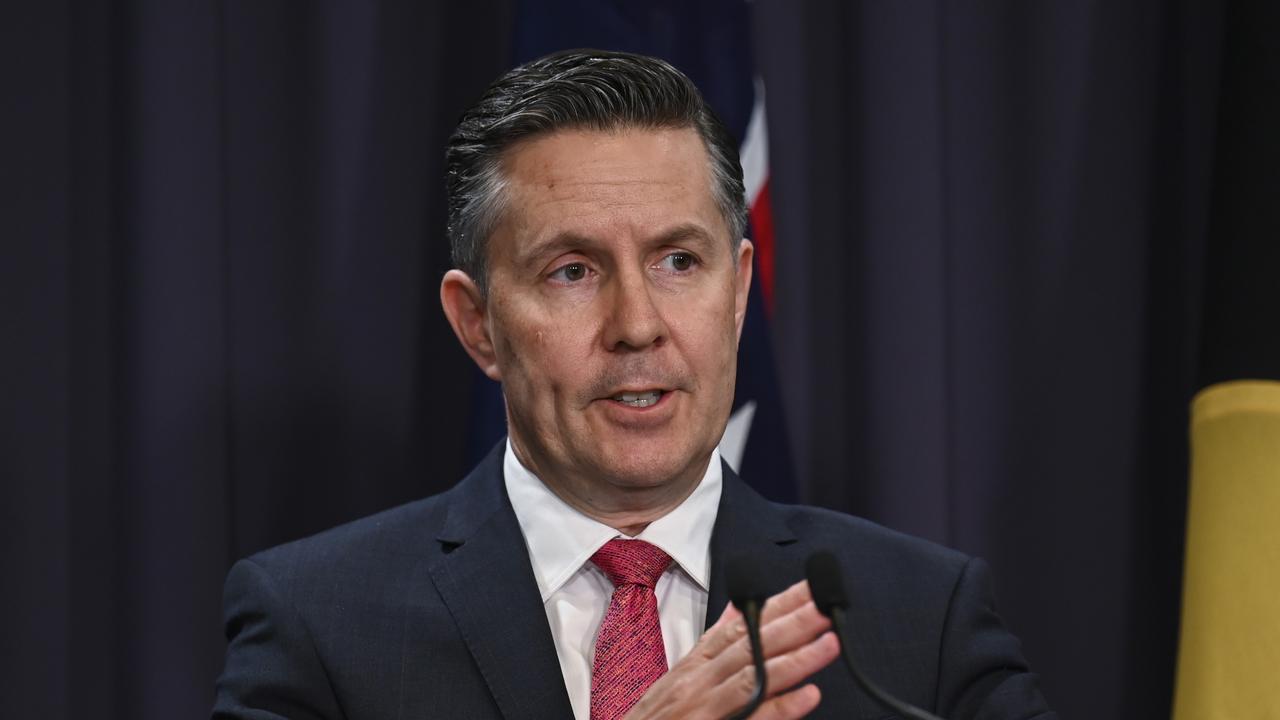
The man everyone is looking at to fix the problem is federal Health Minister Mark Butler. Butler released the Strengthening Medicare report in February. It was greeted by most as a document full of reasonable ideas but lacking policy detail and, most importantly, funding commitments.
Butler says the detail is coming and there will be funding in the May federal budget but he says no one should expect a quick fix.
“It’s not one budget, it’s not one term of parliament,’’ Butler concedes.
“The profile of the community has changed dramatically since Medicare was designed.
“We have an older population with much, much more chronic disease that requires a different type of care to the sort of care that was much more common 40 years ago when people were visiting doctors for a short episode of illness, get that fixed up and come back whenever they have another episode of illness.’’
Butler says bulk billing will always be with us, but how Medicare is funded will need a fundamental rethink.
“You can’t put more money into the existing system because the existing system just isn’t meeting the needs of Australian patients in the 2020s.” It means there will be a move from a transactional model to one that is more focused on outcomes for a patient. It’s referred to as a “blended funding model”.
Doctors would be paid an annual fee to look after a patient, plus fees for visits, and the funding pool could also include other healthcare professionals such as nurses or physiotherapists.
Patients would also voluntarily enrol with one practice for their care. The idea being patients will benefit from a more holistic approach to their health.
Butler says that with “complex chronic disease and the mental health issues that are more and more common in the community, an ongoing relationship, not just with a GP but with a healthcare team that will include nurses and allied health professionals’’ will be the best model.
In the short term, Butler is trying to quicken the process to allow more international doctors into Australia and says five urgent care services will be opened in SA this year to help take pressure off hospital emergency departments.
Any solution to this crisis is a long way off and maybe it will never be fully resolved. But for Carmel Toms there is nothing but excitement, although maybe a little nervousness as well.
“I actually think this is the best time to be entering general practice because it is changing and change is driven by the new and we are the new,” she says. “We’re the fresh faces and we’re coming with a new approach and I think that it’s exciting to be at the front of that.”
More Coverage
Originally published as Waiting list blowouts, the death of bulk billing: Inside our GP crisis




